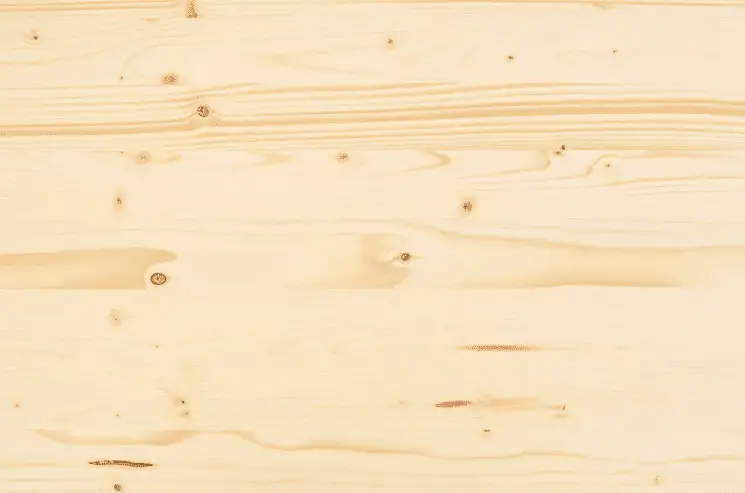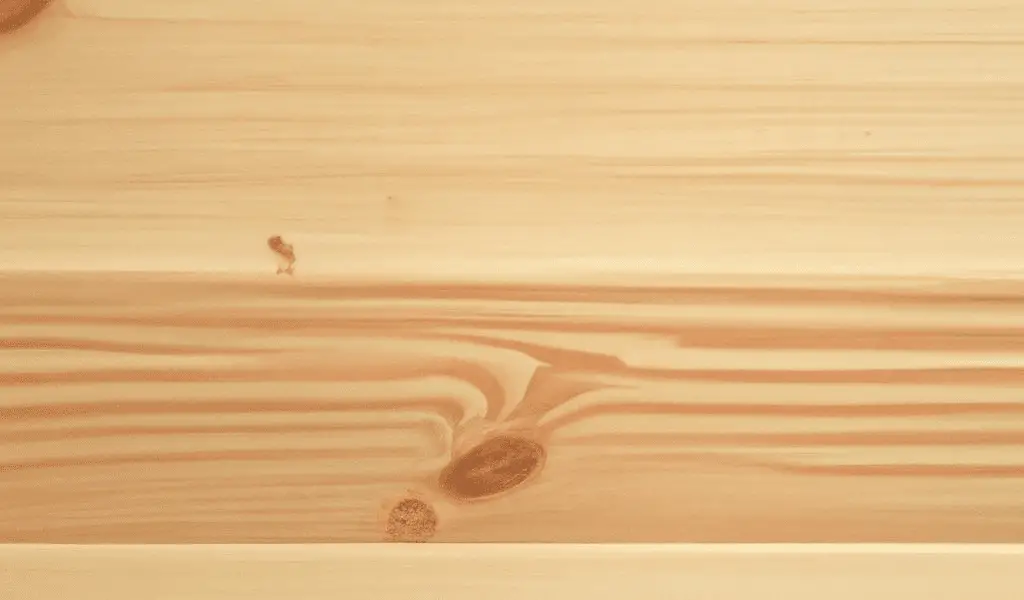You have planned everything about your next woodworking project, but are confused about which wood type is the right.
After narrowing it down you are confused to choose between cedar and pinewood.
Which one is better? Which is more durable?
Clear your doubts regarding cedar vs pine through this curated article.
Cedar and pine wood, as well, are softwood and lightweight, used for ample objectives such as furniture, fences, flooring, and interior decorating.
Despite the numerous similarities between the two, you will get the answer: Is cedar or pine better?
Since the particular features of single wood will make it appropriate for one purpose and inappropriate for another.
The key benefit is cedar and pinewood grow more speedily than hardwood and are available in adequate quantities in the market.
However, you must research wood species and know about the suitability of wood for your project before you buy any wood type.
Read ahead and notice all about cedar vs pine wood: physical characteristics, pros, and cons.
Cedar Vs Pine: The Ultimate Comparison
Cedar Vs Pine Color
Cedar and pine both have a crystal clear difference in color and appearance.
Pine has a lighter color with varieties of shades of golden, cream, and white. The most accepted color of pine wood is yellowish-white to reddish-white.

The most pleasing thing is it has an even and smooth appearance owing to its flat texture. However, pressure treatment conceals its natural look.
The color of cedar wood is light brown with dark streaks and a reflection of reddishness.

Cedar’s reddish tint with straight grain gives an alluring and rustic appearance to grab the eye’s attention.
However, its color changes after exposure to sunlight.
The color of both types of wood largely depends on environmental factors and the origin place.
Cedar Vs Pine Grain
Cedarwood has a straight grain with a medium to rough texture. The straight grain of the wood makes it easier to work with it. Additionally, it has medium natural luster grain.
Pinewood has, too, straight grain but with a medium-uniform texture.
Cedar vs Pine Scent
Cedar has lasting, strong, and fragrant-smelling. The pleasant aroma is also one of the reasons for the high demand for cedar for cabin flooring and indoor furniture.
The reason behind the aromatic cedar is the presence of the element: Thujaplicin. Moreover, cedar containing natural oils gives an appealing fragrance and protection from pests.
Whereas, pine has a vague and resinous odor. Some people can be sensitive to pine smell, however, it does not mean that it is poisonous. The solution to mitigate the smell is removing the wood moisture since its smell decreases over time due to drying out.
Cedar Vs Pine Strength
The higher strength of cedar than pine is the cause for the large-scale usage of cedar for fencing.
Pinewood will not satisfy your requirements regarding durability and strength because of its liability to decay and rot. The solution is pressure treatment that supports it for durability.
The average duration of pine fence life is 10 to 15 years. The cedar fence lasts up to 20 to 25 years.
Their life span can enhance if they are kept properly maintained.
Cedar Vs Pine Resistance To Insects
Cedar dominates pine, concerning resistivity to insects.
Cedar deters insects, rot, decay, and pests. And it has strong resistance to buckling and weather changes. Cedar doesn’t require to be often treated, unlike pine. Proper examination of cedar can avoid fungus and bacteria growth.
On the other hand, pine does not satisfy the resistivity of insects.
Cedar Vs Pine Workability
Cedar can easily bend without the fear of breaking. So, use cedar freely for bending purposes during construction. It has a fine workability being a softwood. It is indeed justifiable easy to work with cedar.
Pine has great workability, which grabs the enamels strongly. You can trim, glue, and finish it effortlessly. Super easy to work with pine wood as it is effortless to stain and polish the pine wood.
Nevertheless, it is poor at holding screws and nails. The resinous wood is hard to use with sandpaper.
Cedar Vs Pine Durability & Maintenance
Cedar’s traits, which you will not find in pine, are substantial durability and resistance to rot and pests.
What is more?
It deters warping and contracting.
The classification of cedar wood regarding rot is that Eastern red cedar is largely resistant to pests in comparison to Western red cedar. So, get aware of each wood species to ensure long-lasting work.
Owing to its high durability, it is used for exterior purposes like boat building.
Pine has satisfactory durability and is the most suitable for interior activities like interior furniture, wardrobes, etc.
Pressure treatment is a must for pine wood to use in outdoor projects.
Pressure-treated pine is a fair choice for fence posts with its resistance to the soil.
Which wood is easy to maintain: cedar or pine?
Cedar is a naturally strong and highly resilient wood as compared with pine. It is a robust wood for which less or negligible conservation is required.
However, general caution is a must. In the case of a cedar fence, clean them periodically using water and soap solution.
The pressure washer is a way to avoid the problem of Cedar’s color fading. Ensure inspection to check it for the symptoms of decay.
Pine is not a tough wood that needs to be sealed and painted. It does not withstand rotting. So, Regular maintenance is inevitable for it.
Chemical preservatives like pressure treatment are used to protect pine from weather and other exterior factors. Otherwise, severe chances of rotting and breaking down pinewood.
Note: Examine different species of wood type for a specific project objective. For instance, cedar shingles have a span of more than 20 years, whereas, a cedar fence can go for 30 years
Cedar Vs Pine Cost & Availability
Pine is more inexpensive than cedar.
Nevertheless, the price varies according to the wood quality, local suppliers, and fence establishment companies.
You would be surprised to know that pine fence prices are half of the cedar fence prices. Pine wood is readily obtainable, which is the reason for its lower prices.
On the contrary, cedar wood is hard to access in the market, and its high demand is the factor that leads to high prices.
Moreover, fluctuations are common in these wood prices.
A better choice regarding affordable cost and availability is pine.
What are the Uses of Cedar and Pine Wood Together?
The parallel uses of cedar and pine wood include outdoor construction, furniture, fencing, and home furnishing.
However, people prefer cedar for fencing because of its aesthetic features and strength. Pine is chosen for the same as it is affordable.
Cedarwood is used for musical instruments, decking, siding, fencing, boatbuilding, and many more. Cedarwood has an abundance of applications and properties than other softwood.
It has an abundance of applications, from indoor to outdoor wood projects.
Pinewood is used for flooring, paneling, cabinets, tables, furniture, wood frames, roofing, and so on. Pinewood is the first choice for interior design and decoration.
Pinewood Advantages
1. Workability: Pinewood has considerable workability. You can use it manually or continue work using different tools. The smooth surface of pine wood is easy to finish and trim. Use the portable wood effortlessly as it is lightweight.
2. Large Quantity: The availability of pine is plentiful in the market. So, most species are accessible at hand, which drops their price.
3. Low-Cost: It is a Pocket-friendly wood. That is much cheaper than cedar.
4. Weather Resistivity: Also, it withstands expansion and contraction in different weather conditions. Pressure-treated wood can be set up for exterior purposes due to its weather resistivity.
5. Soil Resistivity: Pine wood is known for its soil resistivity. Pine fences treated with pressure are exactly usable for soil contact purposes.
Pine Wood Disadvantages
- Pine wood is liable to molding that is not recommended for heavy-load projects.
- The fetching light colors of pine wood fade away in the sunlight.
- Ofen maintenance is required because of its poor resistance to insects.
- Its workability is affected by its low grabbing power to screws and nails. The fixed screws and nails can loosen later and can be a reason for the extra expenditure later. Prefer using a top-quality adhesive for pine wood.
- A lower grade of pinewood means the presence of knots and knotholes. So, always go for high-grade pine wood with negligible knots.
Cedar Wood Advantages
1. Finest Appearance: Pleasant appearance and fragrance are extra benefits for cedar interiors and furniture.
2. Durability: Cedar is a long-lasting wood due to its high durability and robust strength. So, cedar ranks above pine wood concerning heavy and exterior projects.
3. Rot Resistivity: It naturally withstands rots, decay, and insects since it is enriched with natural oils. So, you need not apply any chemical treatment on its surface.
4. Time-Saving: Once the cedar wood is installed, then no regular maintenance is needed. So, using cedar wood is time-saving for you.
5. Eco-Friendly Wood: Cedarwood is indeed an eco-friendly wood. There is no susceptibility to any allergies while establishing the cedar wood. And no use of chemical preservatives for cedar wood.
6. Lightweight: Effortless to work with cedar since it is lightweight and softwood.
Cedar Wood Disadvantages
- Exposure to sunlight affects the wood badly by fading its color.
- Cedar wood is available rare in the market and even at high prices.
- Cedar is not appropriate for activities, and places have moisture. It is suitable only for dry areas.
- Liable to damage when contacted with soil unless proper preservation.
- Expensive wood, which has double the price of pine.
The Extra Advantage of Cedar
Why is cedar the only great choice for outdoor furniture?
The coolness of cedar wood remains the same even in hot temperatures.
The reason is the wood grain of cedar consists of small air pockets which provide insulation for cedar furniture that keeps its temperature unchangeable.
Outdoor furniture will remain cool in the sharp sunlight. And you can use it comfortably.
Why Should You Consider Climatic Conditions?
Apart from specific pros and cons of cedar and pine, their usability and durability depend on the climate conditions.
Humidity level and the amount of rainfall are important factors to consider while installing any type of wood.
Cedar is more dry wood than pressure-treated pine wood. That is not suitable for damped and humid weather. Because the boards of cedar wood can swallow in wet areas.
While pine is the best suitable wood for humid regions. In dry places, it is a must to dry out pine wood before installing it. Or else, probabilities of warping and narrowing of Pinewood in dry areas.
Winding Up
Cedar wood is distinct from the rest of the softwood for its consistent temperature and natural resistance to insects and decay.
On the other hand, there are the ignorable points of pine, like you can change its appearance with the choice of your colors and economical, too.
Pinewood has soil resistivity, while cedar wood does not.
You can not decide by relying only on the main differences between cedar and pine since your specific requirements and preferences equally matter.
You can inspect cedar and pine wood species by identifying characteristics, convenience, cost, durability, and accessibility, as mentioned above in the article. Both types of wood have particular advantages, and their uses are suitable for specific purposes.
Hope you got vivid clarity about cedar and pine. Have a great experience while installing your wood projects!
